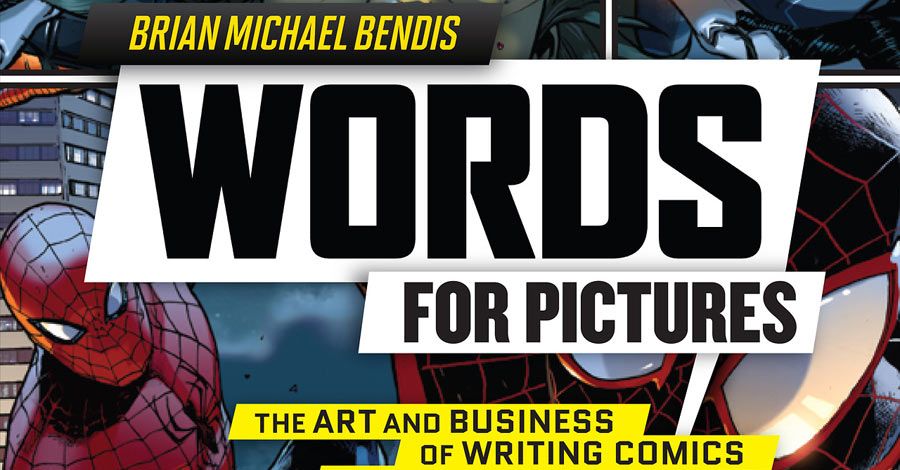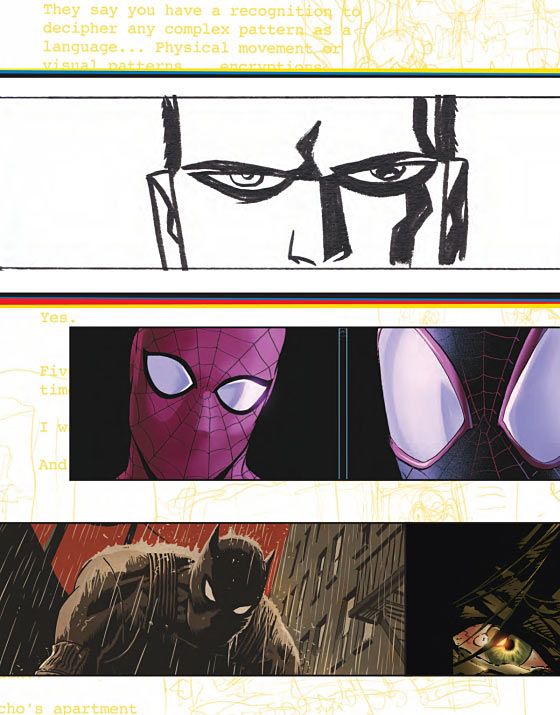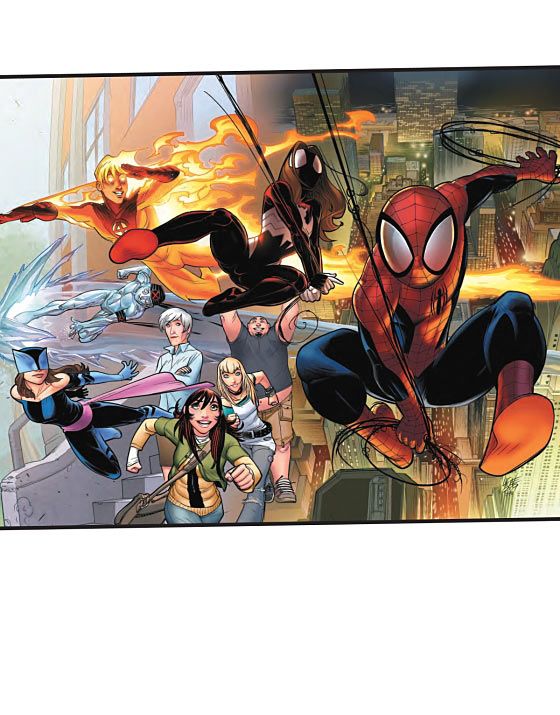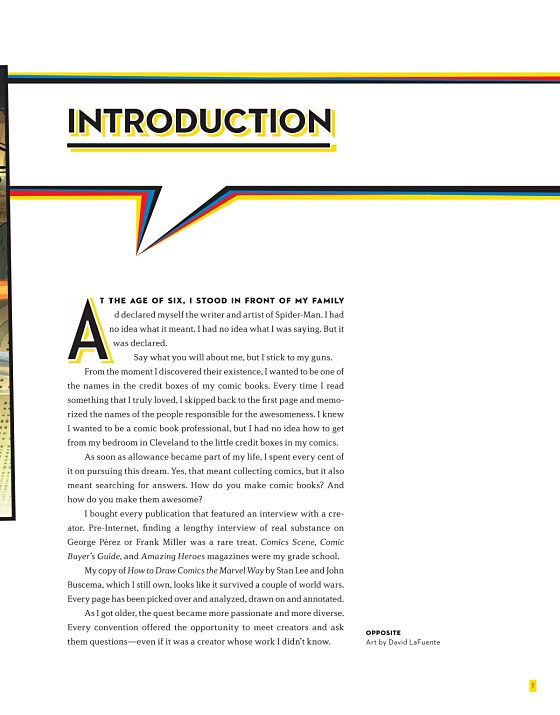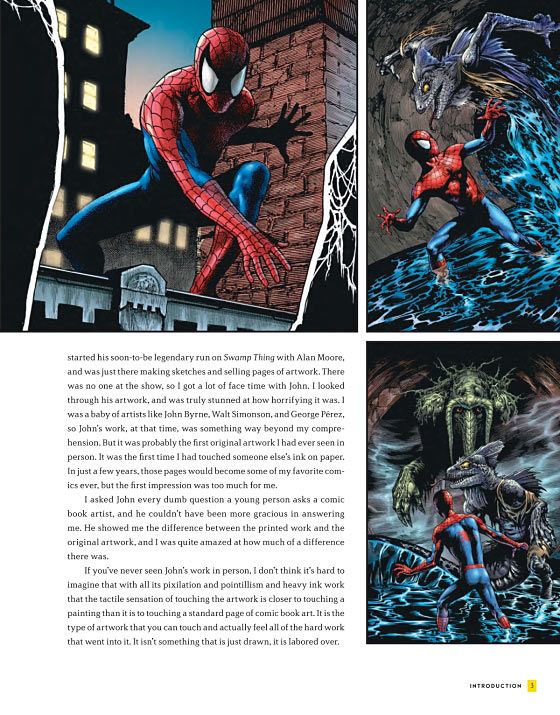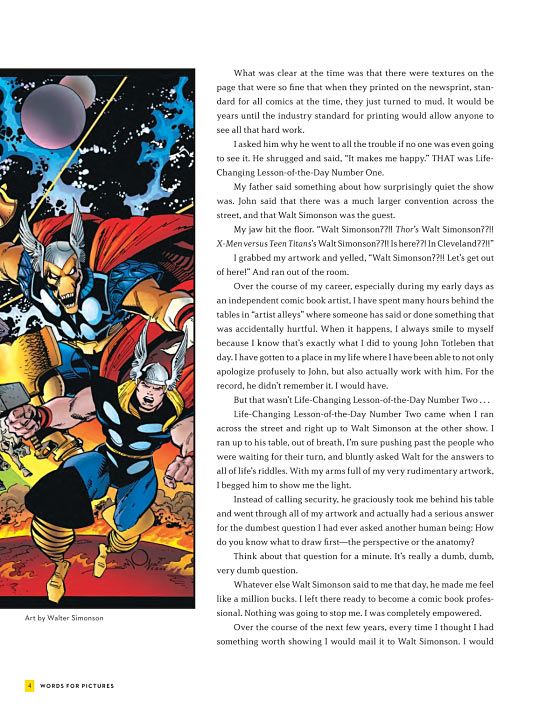It may not be truly possible to "do it all" in comic books, but Brian Michael Bendis has certainly done "a lot of it." Currently, he's the writer of Marvel's two flagship X-Men books -- "All-New X-Men" and "Uncanny X-Men" -- along with "Guardians of the Galaxy," as those unconventional characters approach the massive media spotlight that comes with a feature film.
But along with his acclaimed work on Marvel mainstays -- including eight years on "Avengers" books -- he's also one of the most successful names in creator-owned comics, with "Powers," launched back in 2000 with artist Michael Avon Oeming currently in development as a TV series for Sony's PlayStation Network. He's also written video games, TV shows and serves on the creative committee for Marvel Studios.
RELATED: "Powers" Set for Playstation Network in December
All of that is the long way of saying that he's fairly well qualified to give some advice to aspiring comic book writers -- which is exactly what he's doing with "Words for Pictures: The Art and Business of Writing Comics and Graphic Novels," a newly released instructional text published by Watson-Guptill, a division of Random House. It's an extension of the college courses he's been teaching for the last few years at Portland State University, a job he started at the urging of veteran Dark Horse Comics editor Diana Schutz.
"She's a teacher, and when Portland State was looking for a writing teacher, she had them bully me into doing it," Bendis told CBR News. "I had realized upon the offer that almost everyone in my life, close or not close, that I had admired, had been a teacher at one point. I realized that is something I need to make time for."
Anyone who follows the comic book industry closely knows there are quite a few writers, artists, editors and publishers located in the Portland area, and Bendis uses his location to his advantage by bringing in comic pro friends to his course for guest lectures.
"I'm not teaching a 'How to Write Like Me' class -- I'm not interested in you writing like me, because that's kind of my thing," he said. "But I want to give you Greg Rucka and Matt Fraction and Kelly [Sue DeConnick] and everyone to come in and give their point of view of the industry, and their point of view of their craft. The students take from them which ones they can apply to them and their work. Because there's no right or wrong answer, there's just things that work for certain people."
This collaborative approach -- Bendis calls himself the "tour guide" of the course -- got the attention of Random House, thinking it would fill a void among the existing crop of how-to-write books. Bendis pitched the publisher on adapting the spirit of his classes into a text, and despite finding the prospect "daunting" at first, agreed.
"I literally pulled in every favor I have in the business -- which was not hard to do, because so many people are dying to share their process," Bendis said of the two years he spent putting together "Words for Pictures." "It's all these profiles, and spotlights on all these creators, talking about these very important parts of their lives. God bless Matt Fraction -- I had an interview with him that I had done, and I showed him the interview, and I said, 'Do you want to proofread this and make sure you like it?' Instead he handed back a whole chapter that he wrote himself, called, 'How I Write Hawkeye.' It's him and David Aja revealing all the stuff that they haven't even revealed on Tumblr."
RELATED: Bendis Promises "Last Will and Testament" Leads to "Completely Different X-Men" Franchise"
Bendis didn't limit himself to his geographic area when reaching out to comic book creators for their input -- he went out on a limb and reached out to an all-time legend of the superhero genre, which paid off.
"I paced around my office, asking myself if I should bother Stan Lee for something we haven't seen from him that I could show. "'Should I bother Stan?' Stan's been so nice to me over the years. Who wants to bother Stan? He's 90 years-old. You don't bother him.
"I e-mailed him along with some of my closest friends," Bendis continued. "I heard from Stan first. He immediately gave me a 'Silver Surfer' script no one's seen before. I was like, 'I love this business. Goddammit, that's awesome.' Literally, before my best friend in the business could have time to respond, Stan Lee goes, 'Here you go! This will do it, right?' What a good dude."
Also within the book is one "artists' roundtable" and one "editors' roundtable," with Bendis gathering insight from professionals in both fields to assist wannabe writers navigate those vital relationships.
"The artists' roundtable is very interesting, because it features so many artists answering the same questions," Bendis said. "Here's a question, and here's everyone's answers. It features friends of mine like Mark Bagley -- who doesn't do a lot of interviews -- so you don't know a lot of their philosophy. Quite a few people like this, from all walks of life -- from legends all the way down to the newest, hottest guys -- each answering the questions about what style they like, and what kind of collaboration they like. I was surprised by the answers.
"And then the editors' roundtable," Bendis continued. "That's the questions I get the most: 'How do I get an editor's attention?' 'How do I break in?' 'What do I do once I get their attention, how do I behave?' Having all the editors from Marvel and Dark Horse explain to you very, very clearly, 'This is what you should do, and this is what you should never do' -- I think that alone is worth the price of the book. It's so fascinating. My god, when I was in college, if I had a book like this."
As the title implies -- "Art and Business" -- the book contains advice on how budding writers should approach the all-important (though considerably less fun to talk about) financial side of a career in the arts.
"That's the dirty, hidden secret for creative people -- you have to run a business," Bendis said. "It's very hard for people like us to do that. We get into the basics of how to do that, and how to protect yourself, and how not to become a cautionary tale -- because good lord, can we go a week without someone being a cautionary tale?"
By incorporating a variety of different elements and contributors, Bendis aimed to "make it as entertaining as this medium is" -- and avoid authoring a boring textbook.
RELATED: Bendis & Quesada Welcome Marvel Super Heroes to "Disney Infinity 2.0"
"Some writing books are very hard to read," Bendis said. "They're very dry. That's why I always point to Robert McKee's 'Story' as a good one, because it's not boring -- I don't agree with all of it, but it's certainly not boring."
Bendis' Portland State courses have generated widespread interest, but are naturally limited based on class size and location. With "Words for Pictures," anyone who can access the book can get a taste of what Bendis and friends have to offer comic book hopefuls, and he's excited about what that might mean.
"I'm just so happy with the way it came out, and I can't wait for it to come out, because I know it's going to help someone get where they need to get to, to make their dream come true -- and what could be better than that?"
"Words for Pictures: The Art and Business of Writing Comics and Graphic Novels" is available now.

